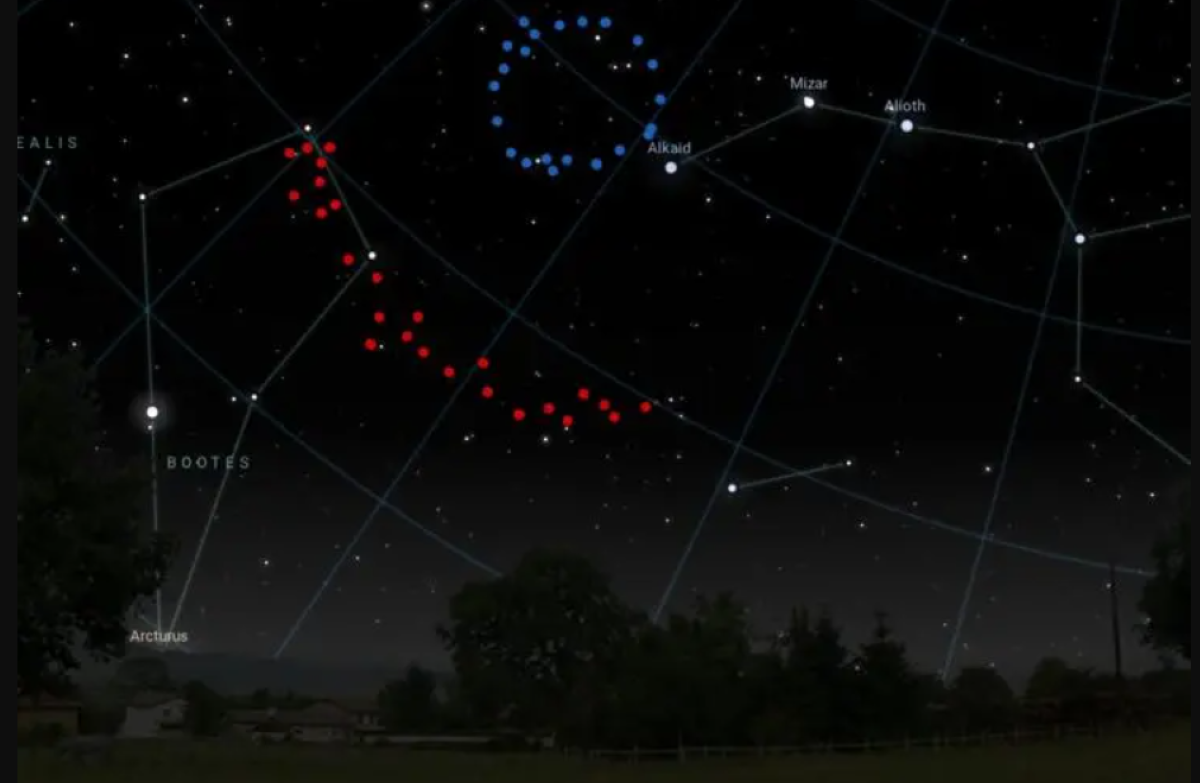A mysterious ultra-large structure discovered in space may challenge our understanding of the cosmos, according to a new study
The structure dubbed the "Big Ring on the Sky" lies around 9.2 billion light-years away from Earth and presents a mystery to astronomers, as such large structures are supposed to be too big for the "average region" of space.
It was discovered by PhD student at the University of Central Lancashire in the United Kingdom, Alexia Lopez. Lopez also discovered the Giant Arc on the Sky, another large structure from 2 years ago.
The Big Ring is about 1.3 billion light-years in diameter, with a circumference of about four billion light-years. Both of these large structures are in the same cosmological neighborhood, a summary of the findings said. They were also seen in the same cosmic time, which presents many questions for astronomers.
There are several possible explanations for the mysterious new structure, though none are confirmed.
"Neither of these two ultra-large structures is easy to explain in our current understanding of the universe. And their ultra-large sizes, distinctive shapes, and cosmological proximity must surely be telling us something important – but what exactly?" Lopez said in a summary of the findings.
"One possibility is that the Big Ring could be related to Baryonic Acoustic Oscillations (BAOs). BAOs arise from oscillations in the early universe and today should appear, statistically at least, as spherical shells in the arrangement of galaxies. However, detailed analysis of the Big Ring revealed it is not really compatible with the BAO explanation: the Big Ring is too large and is not spherical."

The Big Ring appeared to be a perfect circle in the sky at first. However, Lopez later found that it is actually more of a coil shape when it is observed from Earth.
This ring could also be a signal of Conformal Cyclic Cosmology. This theory was developed by physicists Roger Penrose and Vahe Gurzadyan and proposes that the universe goes through infinite cycles. The idea is that each one begins with a huge event, such as the Big Bang.
The ring could also be the result of the passing of cosmic strings, which are "topological defects" created in the early days of the universe.
The Big Ring and the previously discovered Giant Arc present real challenges against the Cosmological Principle, which itself remains a great mystery in physics. The Cosmological Principle questions whether the universe is homogeneous or inhomogeneous.

"The Cosmological Principle assumes that the part of the universe we can see is viewed as a 'fair sample' of what we expect the rest of the universe to be like. We expect matter to be evenly distributed everywhere in space when we view the universe on a large scale, so there should be no noticeable irregularities above a certain size," Lopez said.
"Cosmologists calculate the current theoretical size limit of structures to be 1.2 billion light-years, yet both of these structures are much larger – the Giant Arc is almost three times bigger, and the Big Ring's circumference is comparable to the Giant Arc's length."
Lopez said from current cosmological theories, astronomers did not think "structures on this scale were possible."
"We could expect maybe one exceedingly large structure in all our observable universe. Yet, the Big Ring and the Giant Arc are two huge structures and are even cosmological neighbours, which is extraordinarily fascinating."
Do you have a tip on a science story that Newsweek should be covering? Do you have a question about Space? Let us know via science@newsweek.com.
Uncommon Knowledge
Newsweek is committed to challenging conventional wisdom and finding connections in the search for common ground.
Newsweek is committed to challenging conventional wisdom and finding connections in the search for common ground.
About the writer
Robyn White is a Newsweek Nature Reporter based in London, UK. Her focus is reporting on wildlife, science and the ... Read more
To read how Newsweek uses AI as a newsroom tool, Click here.






